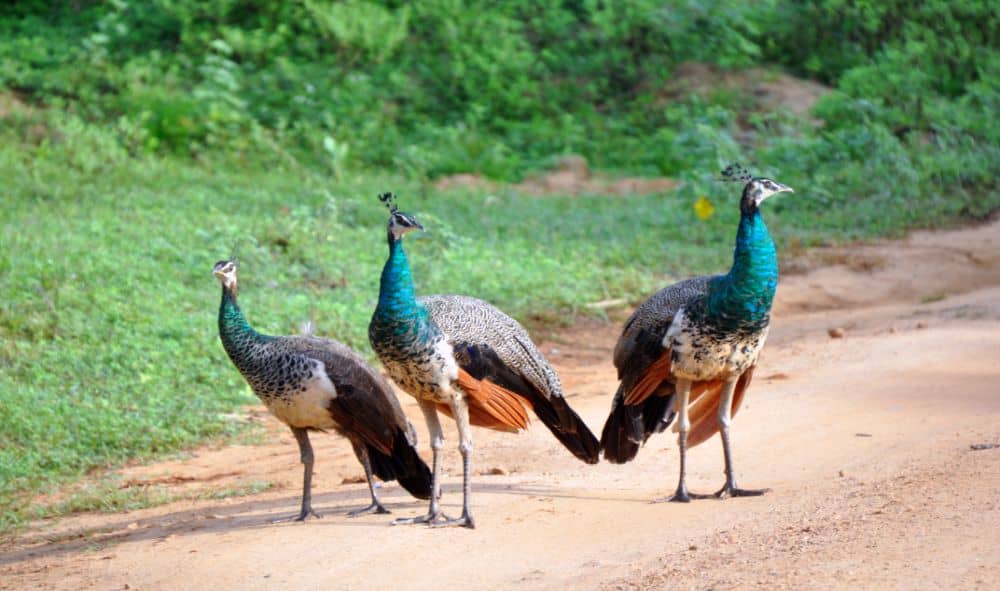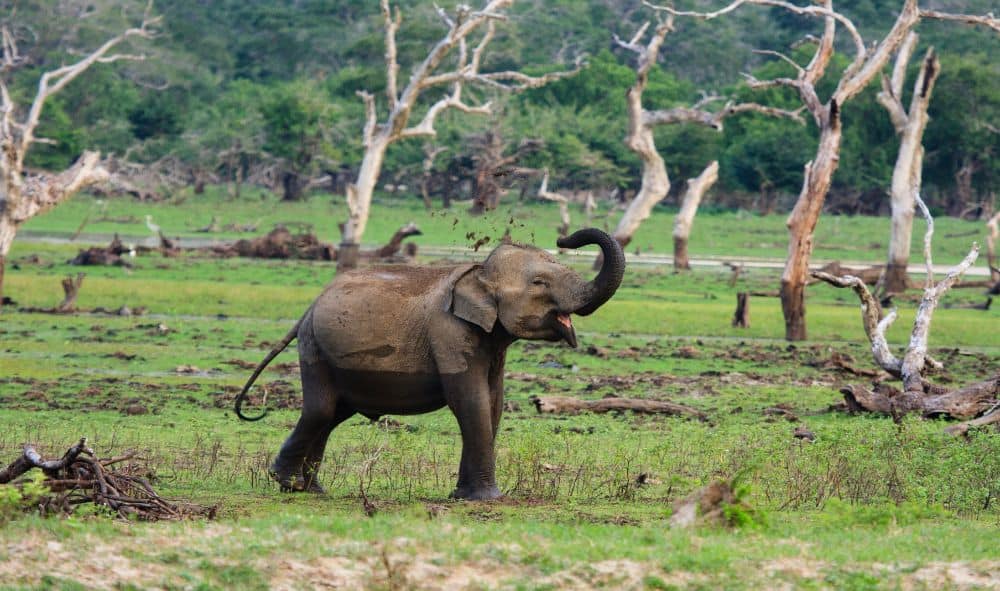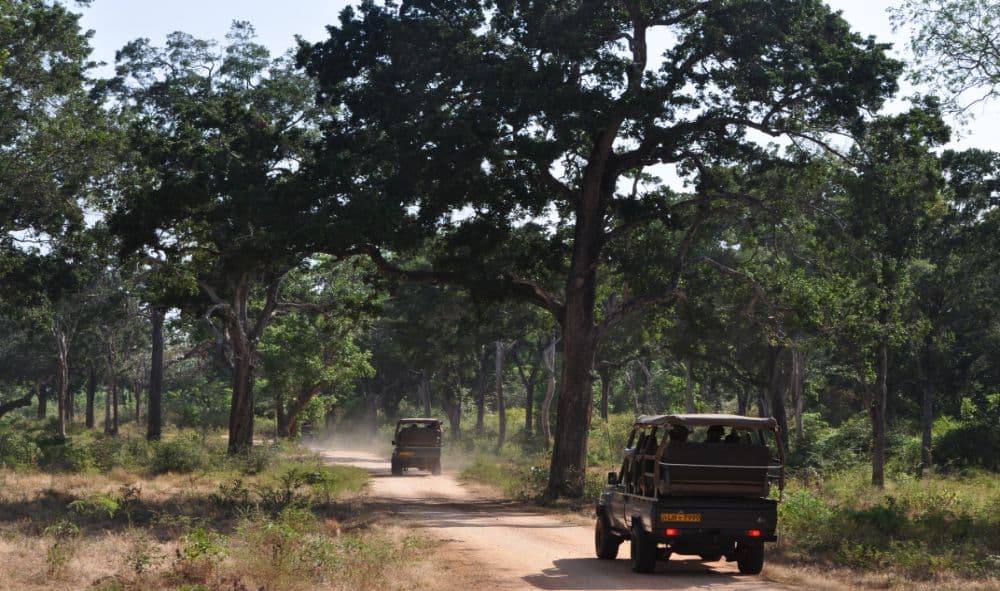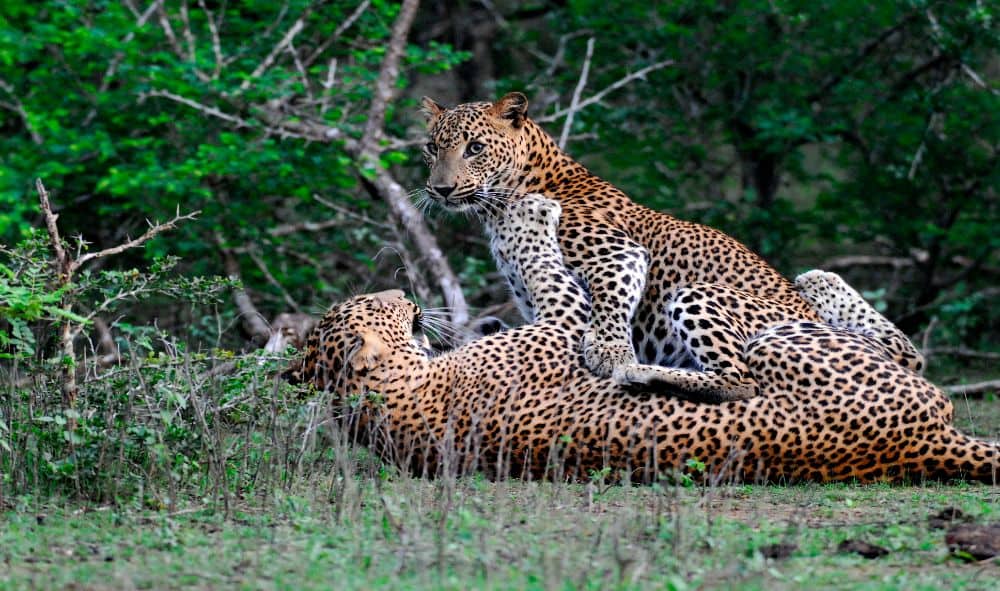Yala
Sum up
Yala, situated in the south east corner of the island, is home to the greatest variety of Sri Lanka’s wildlife. Its varying habitats, consisting of scrub plains, jungles, rocky outcrops, fresh water lakes, rivers and beaches, provides home to many animals including sloth bear, elephants, buffalo, monkeys, deer, crocodiles and the endangered Sri Lankan leopard.
Weather
Located in one of the more arid regions of Sri Lanka, conditions at Yala National Park are mostly hot and dry, although rainfall is primarily expected from November to January (north-east monsoon) and during April (inter-monsoon). February is the driest month, although the long dry season runs from June to October. The mean annual temperature is 27°C, although in the dry season the temperature could go as high as 37C. January to March is best, but you can visit throughout the year. During very dry years, the park can be closed to encourage breeding.
Highlights
- The magnificent Yala leopard
- Yala’s open plains and abundant wildlife
- Herds of wild elephants
- The untamed beaches of the Yala coastline
- Camping inside the park
Getting There
Situated in the south east of Sri Lanka, the Yala National Park can be reached from the hill country via Wellawaya to the south coast, or along the south coast from Galle. It will take up to six hours from Colombo via the southern highway then coast road.
Yala National Park
The Yala National Park is home to the greatest variety of Sri Lanka’s wildlife. Early-morning or dusk safaris with an expert guide are the ideal times to visit the park when the animals come out to the waterholes. Yala closes in the dry season, usually early in September. The Lunugamvehera National Park, in the same district, acts as a corridor for elephants migrating from the Yala National Park to the Uda Walawe area.
Kumana
Kumana, also known as Yala East National Park can only be accessed via Arugam Bay on the South East Coast. The swamp lakes of Kumana are nesting sites for water birds. During the nesting season which begins towards June, large colonies of pelican, spoonbills, herons, painted storks, and egrets can be spotted here. Bundala is an important and beautiful wetland sanctuary combining 20 kms of beach, lagoons and scrub which hosts more than 150 bird species. These wetlands are home to winter migratory birds and large flocks of flamingoes.
History
Sri Lanka became the first country to set up a flora and fauna sanctuary in Mihintale, as long ago as the third century BC, so beginning a long tradition of conservation. Now, 12 per cent of the island is designated for wildlife protection. Although the strict natural reserves are out of bounds for visitors, there are National Parks and sanctuaries, tropical rainforests, and wetland marshes throughout the island where animals can be seen in their natural habitat. Yala National Park, with a total protected area of 1,267 sq kms, maintains a proud tradition. Yala’s Block 1, on the western side of the park and Yala East (known as Kumana National Park) are the only two of five sections open to the public.
Yala
There are limited dining options outside of the hotels in Yala, so we recommend dining where you are staying. Jetwing Yala and Cinnamon Wild offer buffets with plenty of variety; Chena Huts and Wild Coast Tented Lodge serve beautifully presented fusion dishes in idyllic surroundings, and the tented campsites are renowned for their excellent traditional food, served under the stars
Snapshot
Colombo is in an exciting phase in its history. There is a sense of renewed ambition now that peace has been restored to Sri Lanka, but it remains a compact, manageable coastal city offering excellent value and an atmosphere all of its own. Ancestral mansions stand side-by-side with modern hotels springing up into the skyline. Street bazaars buzz right next to a few modest shopping malls. While some roads are clogged with vehicles, there remain many sleepy tree-lined boulevards. Colombo might be mildly chaotic at times but it has at its heart a relaxed and genial air.
Weather
Sri Lanka is affected by two separate monsoons which generally means that there is usually good weather somewhere on the island. Global warming has made weather patterns less reliable, but essentially the main south-west (“yala”) monsoon brings rain to the west (including Colombo) and south-west coasts and hill country largely between May and July. The less severe north-east (“maha”) monsoon hits the east coast – including the cultural triangle – predominantly from November to January. There is also an inter-monsoonal period of unsettled weather preceding the Maha monsoon in October during which heavy rainfall can occur anywhere across the island, Colombo very much included.
Art Galleries
Permanent collections & temporary art exhibits of Sri Lankan artists are held regularlyat the National Art Gallery, Sapumal Foundation, the Lionel Wendt, Barefoot Art Gallery and ParadiseRoad Gallery Café.
History
Colombo is the commercial capital of Sri Lanka and lies alongside the present administrative capital, Sri Jayawardenepura, Kotte. Colombo’s port was influential as early as the 5 th century when ships from Rome, Arabia, and China traded with Sinhalese kings for food supplies, spices and jewels. Many nations fought for the island’s treasures including Arab settlers in the 8C, followed by the Portuguese, the Dutch and, finally, the British who captured Colombo in 1796. This era of western domination ended peacefully with independence in 1948, followed by a separatist war fought by the LTTE (Liberation Tigers of Tamil Eelam) that lasted 25 years. Terrorism was eradicated in 2009, bringing hopes of a lasting peace. Throughout it all, the city of Colombo remained relatively stable and, as well as the majority Sinhalese, Moors, Tamils, Burghers, Chinese, and Malay populations contribute towards its colourful fabric.
Food in Colombo
Food is a highlight of Colombo. The city boasts a wide range of fantastic cafés and restaurants serving cuisine from around the world, whilst smaller eateries serve local hawker-style favourites like string hoppers, lamprais and biryani, as well as spicy pastries including Chinese rolls, seeni-sambol buns and fish patties which are collectively known as short-eats. Some of the best street food is foundon the seafront at Galle Face Green, including delicious koththu roti and isso wade (prawn dumplings).
For a more in-depth experience of local fare, go on our Colombo Street Food Walk.
For a selection of our favourite cafés, bars and restaurants in Colombo, see our Colombo Restaurants Guide. Further recommendations can be found in our comprehensive Booking Information.
Popular Activities
Bundala National Park Sum up Bundala National Park is one of the best places to for birdwatching in Sri Lanka, especially between …
Yala National Park Sum up Yala National Park is one of the largest and certainly the most popular national park in Sri …









